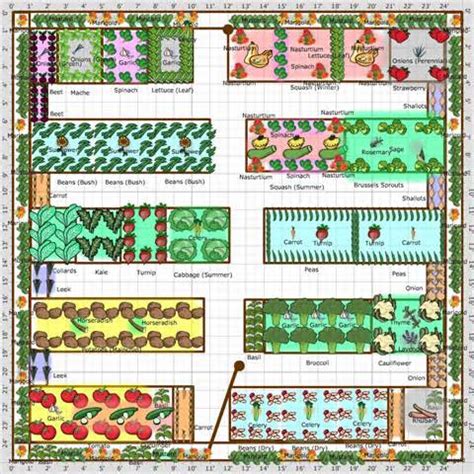Year-Round Balcony Vegetable Garden: Planning, Design, and Growth Tips
Growing a vegetable garden on your balcony year-round can be a rewarding experience, but it requires strategic planning and consideration of environmental factors. From selecting the right containers to understanding sunlight exposure and managing seasonal shifts, this guide will help you create a thriving garden regardless of the time of year. By following the tips and advice here, you’ll be able to grow your own vegetables and enjoy fresh harvests, all while maximizing the limited space on your balcony.
Key Concepts for Year-Round Balcony Vegetable Gardening
- Container Gardening: Using containers allows for portability and control over soil quality and drainage.
- Microclimates: Balconies have unique microclimates, influenced by wind, shade, and exposure to sunlight.
- Succession Planting: A method of continuously planting crops to ensure a steady harvest throughout the year.
- Light Management: Maximizing available sunlight through proper placement of containers and use of reflective materials.
Historical Context of Balcony Gardening
Balcony gardening has long roots, dating back to ancient civilizations. Roman and Babylonian societies cultivated small garden spaces in urban environments, utilizing terraces and rooftops for growing herbs and vegetables. In modern times, especially in densely populated cities, the revival of balcony gardening stems from the desire for fresh, organic produce, sustainable living practices, and better food security.
Current State of Balcony Vegetable Gardening
Today, urban gardening is more popular than ever. With rising concerns over food safety and environmental sustainability, city dwellers are increasingly turning to their small outdoor spaces for growing fresh vegetables. Innovations in container gardening, vertical gardening, and lightweight soil mixes have made it easier to maintain productive gardens even in limited spaces. The focus has shifted towards growing vegetables in a way that minimizes water use, maximizes sunlight, and ensures year-round harvests.
Practical Applications for Planning Your Balcony Garden
To ensure the success of your balcony vegetable garden, follow these practical tips:
- Choosing Containers: Select containers that provide good drainage and are appropriate for the root size of your vegetables. Consider using self-watering containers to reduce the frequency of watering.
- Soil Mix: A lightweight, nutrient-rich potting mix is ideal for container gardens. Add organic matter, such as compost, to improve soil structure and fertility.
- Sunlight and Placement: Most vegetables need at least 6 hours of sunlight a day. Arrange containers to maximize exposure and rotate plants to ensure even growth.
- Watering Schedule: Container plants tend to dry out more quickly than those planted in the ground. Water regularly, but be careful to avoid overwatering.
- Seasonal Adaptation: Choose vegetable varieties suited for different seasons and climates. In colder months, use row covers or bring containers indoors to protect plants from frost.
Case Studies: Successful Balcony Gardens
| Case Study | Challenges | Solutions | Results |
|---|---|---|---|
| Small Balcony in New York City | Limited sunlight due to surrounding buildings | Utilized reflective surfaces and rotated containers to maximize light exposure | Harvested greens, tomatoes, and herbs throughout the year |
| Southern California Balcony | Overheating in summer due to direct sun exposure | Installed shade cloth to reduce heat and watered plants more frequently | Successful year-round growth of peppers, eggplants, and cucumbers |
Stakeholder Analysis: Who Benefits from Balcony Gardening?
- Urban Gardeners: Balcony gardening offers a way for people in urban areas to grow their own food, reducing dependency on store-bought vegetables.
- Local Communities: Encourages sustainability and can foster a sense of community among urban dwellers.
- Environmental Impact: Growing food at home reduces the carbon footprint associated with transporting vegetables from farms to cities.
Implementation Guidelines for a Year-Round Balcony Garden
- Assess Your Space: Determine the amount of sunlight your balcony receives, its exposure to wind, and any space limitations.
- Select Appropriate Containers: Choose containers that are deep enough for the root systems of your vegetables.
- Plan for Succession Planting: To ensure continuous harvests, plan to plant new crops as others finish their growth cycle.
- Install Irrigation Systems: Consider installing a drip irrigation system to simplify watering, especially during hot months.
- Use Companion Planting: Grow vegetables alongside plants that benefit each other, such as tomatoes with basil or beans with corn.
Ethical Considerations for Urban Gardening
Urban gardening, while largely beneficial, does raise certain ethical questions. One concern is the potential for non-native species to spread in urban environments, disrupting local ecosystems. Additionally, water use in areas experiencing drought can raise ethical concerns about resource allocation. Urban gardeners should be mindful of these factors and adopt sustainable practices, such as using rainwater for irrigation and planting native species whenever possible.
Limitations and Future Research
While balcony gardening offers numerous benefits, it also presents limitations. One major challenge is space, which restricts the size and number of plants that can be grown. Another issue is climate: certain vegetables may struggle to grow in the temperature extremes that balconies can experience, particularly in urban heat islands. Future research could explore more efficient ways to insulate containers, use vertical gardening systems, and develop plant varieties specifically bred for small-scale, year-round urban gardening.
Expert Commentary on Balcony Vegetable Gardening
Experts in urban agriculture emphasize the importance of proper planning and adaptation when growing vegetables on balconies. “With the right containers, soil, and planting strategies, anyone can create a successful vegetable garden,” says horticulturist Emily Davis. “Balcony gardening allows people to take control of their food sources, reduce their environmental footprint, and enjoy fresh produce year-round. It’s a fantastic way to bring nature into the city.”
Future developments in this field are likely to focus on integrating smart technologies—such as automated watering systems and climate sensors—into balcony gardening setups, enabling more efficient and sustainable growing practices.


